
Spring
Spring brings new beginnings, and it is just a few steps away from Summer. Just like everything else in the garden, our lawns are waking up, too. And you are in charge!
It depends on our actions how quickly the lawn will bounce back after the winter months.
Spring groundworks should be laid as early as the Autumn.
The condition of your lawn will be defined by the preparation work you put in in the Autumn, preparing the lawn for harsh winter months. So, it all depends on how you looked after the lawn in Autumn.
Any changes in weather (frost, snow, warm spells, and everything else that comes during the winter) during the winter affect the general health of your lawn.
Snow Mould.
If attacked by Snow Mould (Microdocium Nivale l) the lawn first will suffer small round patches which slowly grow larger. The patches are pinkish or grey, white in colour. Snow Mould is a lawn disease indicating that the lawn is suffering from fungal infection, and it does not matter if there is snow or no snow. Causes:
- New lawn. Immature lawns started to sweat or even grow under the snow cover.
- Autumn leaves, cuttings and other debris left on the lawn. These are ideal conditions for a development of any fungal infections.
- Grass left too long in Autumn.
- Saturated topsoil, poor drainage.
- Wrong fertilisers or wrong fertiliser schedule.
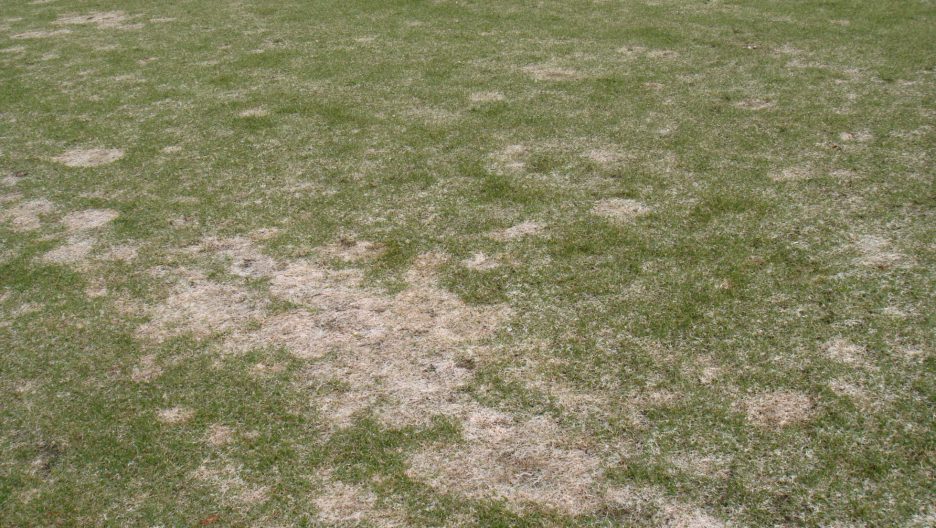
If this issue is not resolved, the recovery of the lawn might take as far as the middle of Summer
How to prevent Snow Mould:
- Correct lawn maintenance in Autumn.
- Rake the lawn in Spring as early as it is possible. This will help the lawn to dry and give unaffected areas room to grow.
- Correct application of fertilisers. Especially the ones containing Nitrogen.
If Snow Mould is left untreated it, can cause ongoing damage to the lawn. The affected areas can get larger and even spread to other parts of the lawn.
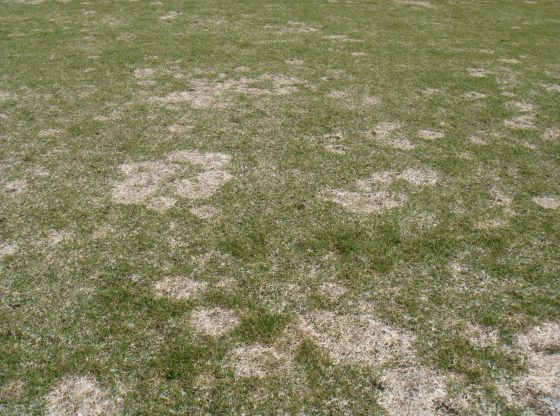 Before / After
Before / After
Scarifying or Raking the Lawn.
Keeping your lawn tidy is very important for many reasons. You will find that there might be old leaves, dead grass, and moss in your lawn after the Winter. During the Winter, the grass and the soil have been compacted. Algae may also be present if there was a very damp Winter. If soil is too compacted, if moss and thatch are plentiful in your lawn, they prevent air, nutrients, and water from reaching its roots, increasing the risk of poor-quality lawn.
Even by just simply raking the lawn with a light garden rake, it would be beneficial in kick starting the new growing season. Besides, it would be urged to rake your lawn few times with a two-week break, particularly if the Snow Mould is present or persistent.
Find Out More aboutkeeping the lawn tidy and clean, as it is important all year round!
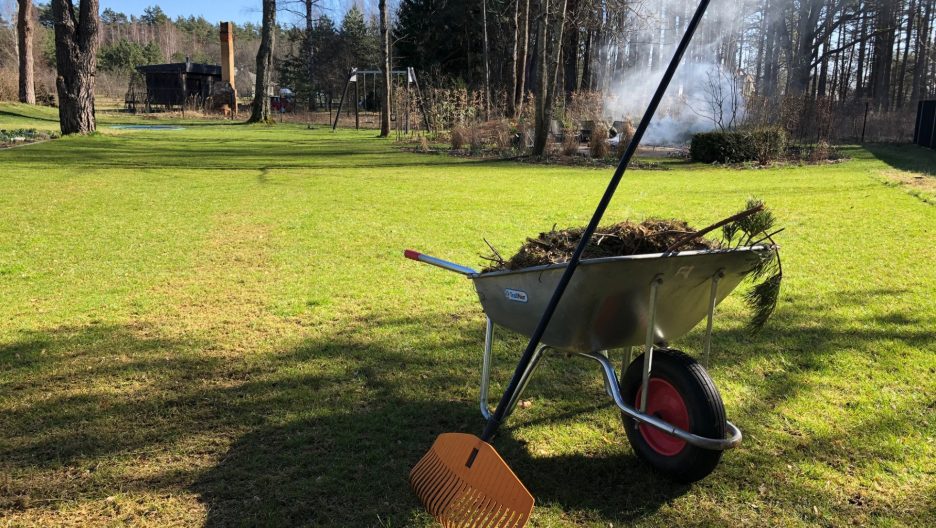
Applying Fertiliser in Spring.
After the ‘dormant season’, when the roots and leaves are at their weakest, your lawn will need additional nutrients. Fertilising in Spring is incredibly important. Not only it helps to ‘jump start’ your lawn for the rest of the growing season, but it also helps nurture the root development and promotes leaf growth. The application of an early Spring fertiliser will not only encourage the absorption of air, water, and nutrients, but also start the process of photosynthesis.
An application of Spring fertiliser will help the lawn to ‘bounce’ back quicker after the Winter. Besides, well fed lawns will be able to compete with any unwanted weeds. The first application should be applied once the lawn is becoming ‘greener’.
Fertilising in Spring is incredibly important. This will help the lawn to recover quicker
Few things to know, before the application of a fertiliser:
- Type of lawn feed should I use.
- Timing is everything.
- Use correct application techniques.
- Avoid the most common mistakes, when feeding the lawn.
Read more about Feeding the lawn.
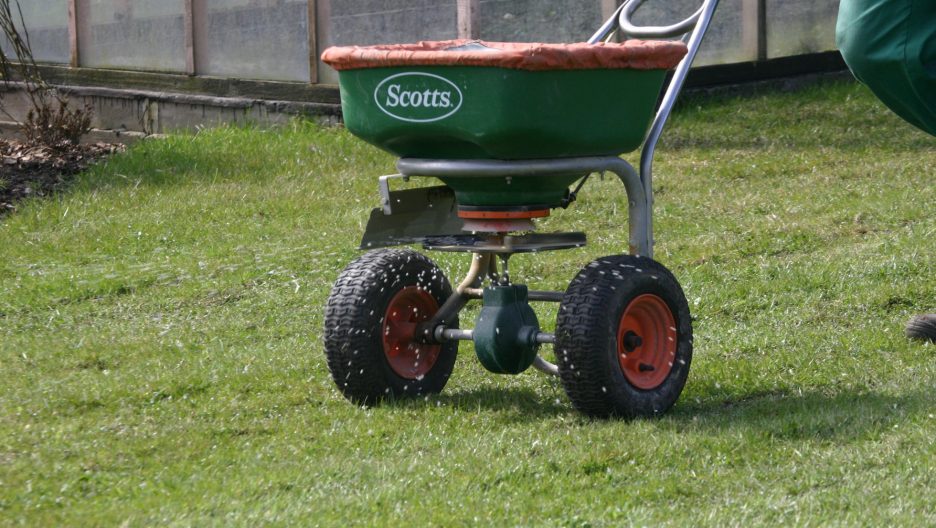
Verticutting
Once the lawn has started the growing process. It might require some additional maintenance, like Verticutting, aeration, reseeding and so on.
Verticutting is a process that removes thatch build-up in the lawn, so grass can breathe easy, better absorb nutrients, and soak in much needed moisture
This process is not essential in all the lawns. The most important – do it correctly and at the right time! Find out more about verticutting.
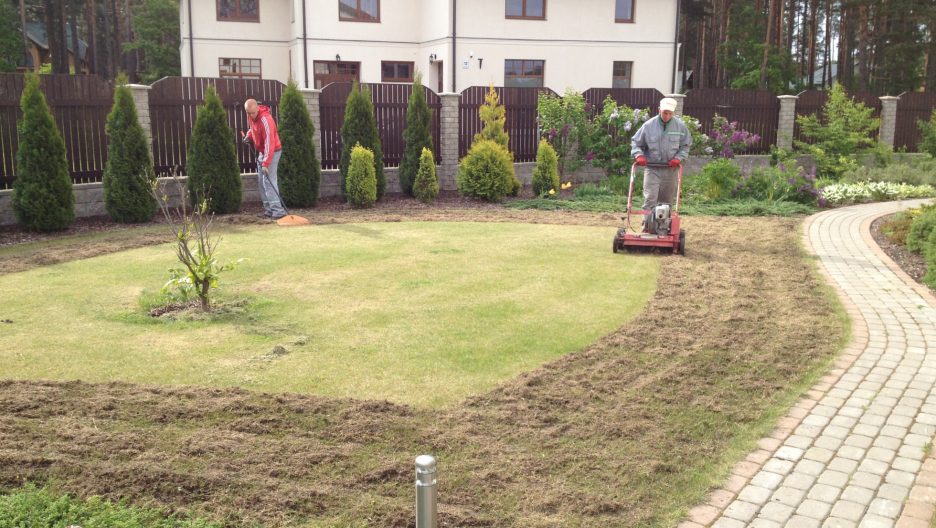
Reseeding or Overseeding the Lawn.
As grass matures, thinning is normal – especially if you enjoy your lawn and use it often. Other factors may affect the condition of the lawn, like soil, moisture, sunlight, nutrients, and maintenance. Weaker species of grass might have been overgrown by stronger species or even weeds, consequently the quality of the lawn has changed.
Using the correct grass seed mix can improve the overall look and quality of the existing lawn
It is important to remember:
- How to reseed.
- Type of grass seed.
- When to reseed.
Find out more about reseeding or overseeding.
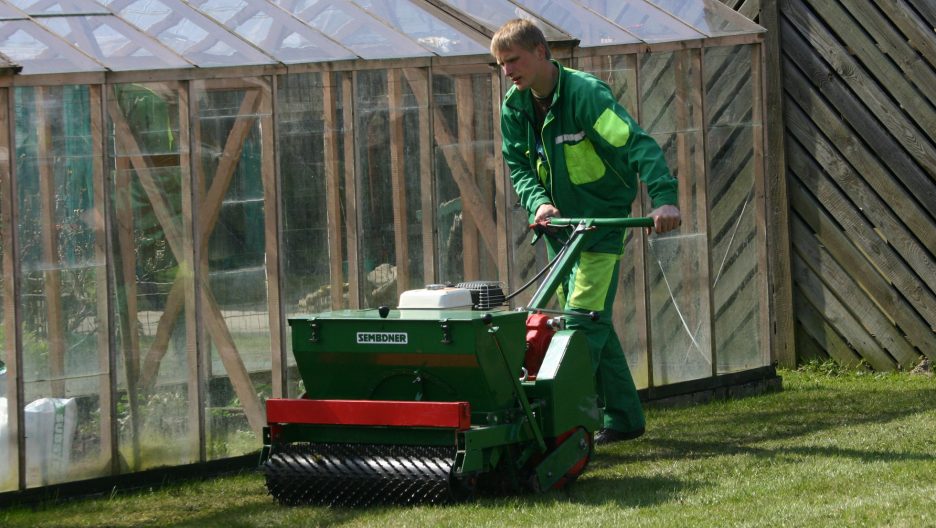
Aerating the Lawn.
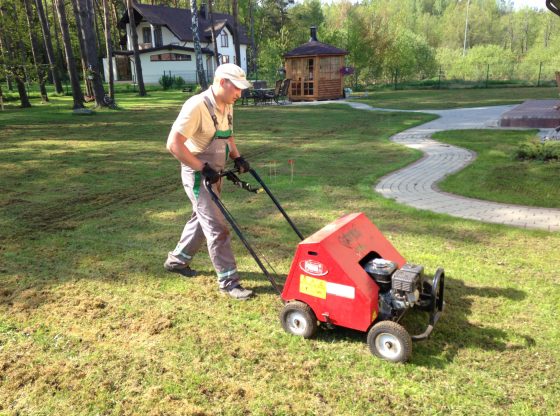 Before / After
Before / After
It is essential to plan and combine all the Spring maintenance jobs. Make sure they are done at the right time and in the correct order. Only by doing so you will be able to achieve the best quality lawn.
Most of the maintenance jobs are carried out at the beginning or middle of May, when the active growing season has started. Once Spring maintenance has been finished it is replaced by Summer maintenance plan.


